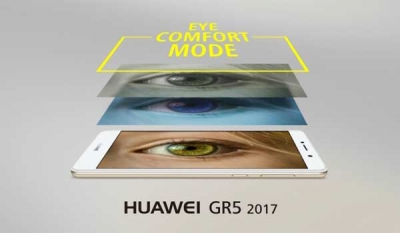Our device is a constant companion, with us every step of the day as we communicate with friends and family, share our lives over social media, and seek out news and information from every corner of the globe.
However, spending so many hours staring at a screen is not necessarily the best thing for our health – and our eyes are particularly vulnerable to the effects of brightly lit screens.
Some devicemakers, like leading global smartphone brand Huawei, are already introducing eye care technology to mitigate the effects of bright screens.
In order to best protect your health, it’s also essential to understand how smartphones affect our eyes and how eye care technology, like the kind currently being pioneered by Huawei, can help.
First, what does blue light do to your eyes ?
Sunlight, or natural white light, is made up of seven colors.
These colors are red, orange, yellow, green, blue, indigo and violet, and as you might remember learning in school, they make up the visible part of the electromagnetic spectrum.
Displays on electronic devices usually emit red, green and blue (RGB) light.
Of the three, blue light can more easily pass straight through the cornea and lens to reach the retina in our eyes, potentially damaging light-sensitive cells and increasing the risk of macular degeneration.
Eye Comfort Mode.
The good news is that there are forward-thinking smartphone brands at the leading edge of the industry that are making significant progress toward developing technology that makes devices healthier and more comfortable for our eyes.
Huawei, for example, has joined forces with China's National Engineering Research Center for Ophthalmic Equipment to develop a unique eye care mode for smartphones.
Because the visual impact of a screen under varying light conditions depends on not only the phone’s brightness but also the warmth or coolness of the colors on the screen, Huawei and the Research Center worked in tandem to determine the optimal settings for screen illumination and color temperature in order to prevent eye strain.
The result ?
An eye comfort mode that users can easily switch on when their eyes are feeling the effects of too much time in front of the screen.
As seen in the trendy yet budget-conscious Huawei GR5 2017 smartphone, thiscutting-edge eye comfort mode enables users to change the coloration of the screen with just one touch; filtering out almost 50% of the phone’s blue light.
What’s more, when eye comfort mode is switched on, the smart program will work behind the scenes to automatically detect ambient light conditions and adjust screen brightness and color temperature to optimal levels for comfort, health and just the right amount of illumination.
Along with protecting their eyes, smartphone users still want to enjoy great viewing experiences on the go.
Luckily, eye care technology can offer both. Huawei’s eye comfort technology, for example, features a 12-bit backlight chip that supports 4096 levels of brightness, instead of the 256 levels offered by most phones.
This allows for smoother, flicker-free dimming and more comfortable viewing experiences that are still displayed in vivid color and sharp definition.
Eye comfort mode is also a benefit to those who like to look at their phone just before falling asleep.
As we now know, exposure to bright, blue light can confuse your brain into thinking it’s still daytime – causing your body to have trouble falling asleep.
A poor night’s sleep can in turn lead to memory problems, make it harder to learn, and even lead to more serious issues like depression and obesity.
In the end, nothing is more important than protecting our health.
Eye care isn’t often at the top of our minds, but with cutting-edge eye comfort technology, we can look after our eyes for the long term; prevent the headaches and discomfort that sometimes accompany too-bright screens; and make it easier for our brain and body to fall asleep at night – all with one simple mode.


























